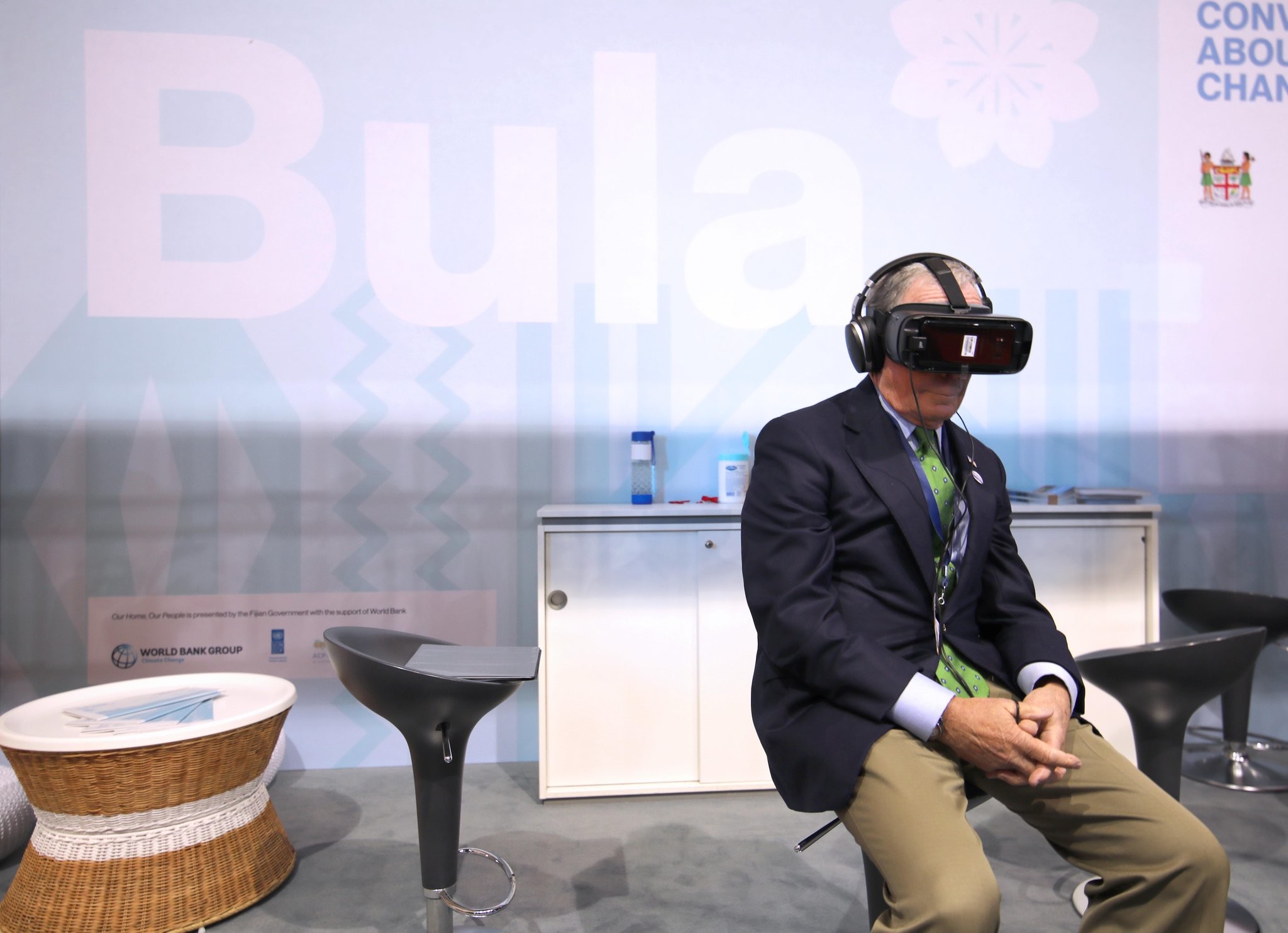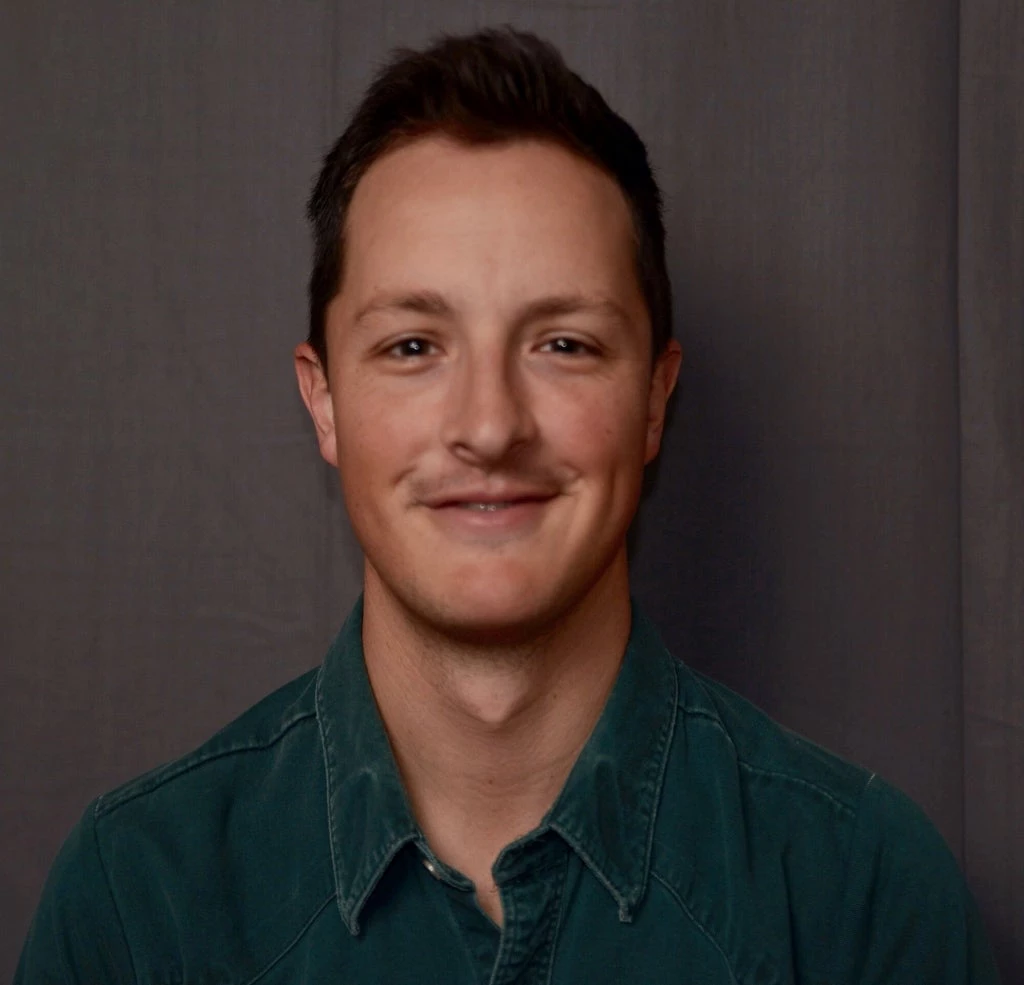(This article was first published on the World Bank's channel on Medium.com, 'World of Opportunity')
If I had to describe my work at its most basic level, I would say I tell stories about aid projects in the Pacific. Yet when I try to dig a bit deeper, my job is about creating empathy; finding stories that people connect with, and then I try to tell them as best as I can, to create compassion, connection, and ultimately, drive people to take some form of action.
But there’s also an imbalance in that statement. As the people telling the stories, we are — mostly unconsciously — too focused on the end audience; the person who will consume, watch, read or digest the story that we’re telling.
Put another way: where does the subject, the person whose story I’m given the privilege to tell, sit in that statement? Once the last frame has been filmed and graded, the last piece of audio recorded, transcribed and edited; what happens to the person who has opened up their life to have their story told?

(Alana Holmberg/World Bank)
Our Home, Our People
Mid-last year, I was lucky enough to have a chance to lead a project for the World Bank and Fijian Government, to help share Fiji’s climate change story with the world. Our Home, Our People incorporated 360-degree Virtual Reality (VR) storytelling, videos, audio, a website, a photo exhibition and dozens of individual stories. It aimed to tell the human stories behind the Fiji Climate Vulnerability Assessment; a report produced by the Fijian government and World Bank that put significant new detail on what climate change actually means for Fiji’s economy.
And we aimed to build the case for greater investment in climate change adaptation at a time when world leaders and decision-makers would be paying particularly close attention to the Pacific; as Fiji hosted the United Nations Chair of the Parties (COP) for COP23 — the first time a small, island state had ever taken on such a significant global leadership role.

Michael Bloomberg, transports himself to Fiji
during the COP23 climate change meetings in
Bonn, Germany in November 2017.
Our Home, Our People has, by most measures, been a solid success. More than 600,000 people have watched the 360 VR film online or in person at events around the world, including at the COP23 meetings in Bonn, Germany in November. It’s been shown in film festivals around the world, and was named an innovation finalist in the UN’s SDG Action Awards. But even more crucially, it has been seen by a host of world leaders with the power to influence global climate change policy and investment, including recently-appointed UN Special Envoy for Climate Change, Michael Bloomberg as well as Fijian Prime Minister and COP23 President, Frank Bainimarama, who recently told an audience at the film’s premiere in Fiji:
“I first watched this film during those busy days in Bonn in November, and one of the things that struck me was how well the film conveyed the message that we have long aimed to share with the world about climate change: that we Fijians are not standing still and accepting the realities of climate change; rather that we are resilient; we are coming together in our spirit of vei lomani — to support each other and build our communities through these challenges. …I urge as many Fijians as possible to try to see it… Because it is genuinely brilliant.”
A truly Fijian story
This project was something of a labor of love for the diverse, wonderfully talented group of people who helped produce it. Each member of the team believed deeply in the value of the story at the heart of this work, but, more importantly, we all knew that for many of us, this was not our story. This was — and is — a Fijian story, told by Fijians. The international members of our team, including me, were there to provide the platform for others to tell their story, and for people to hear it, see it and — one of the benefits of VR — experience it.
Yet despite the overall global narrative around climate change being one of doom and gloom, these are stories of strength, resilience, patience, and an incredible depth of community; wonderfully articulated by Rupeni in the film; who speaks of vei lomani (a Fijian phrase of how you express love for one another, through actions).
Going back

— Ken Cokanasiga (L), Alana
Holmberg and Tom Perry (R) with
one of its stars, Asmita Kamal (centre).
With the spirit in mind, a few weeks ago, three of us that had worked on the project — Alana Holmberg, Ken Cokanasiga and I — had the chance to go back to the communities in Fiji we produced it in to bring this special project to a proper close. Despite the benefits of technology (there is 3G phone coverage relatively close to each of the communities who were part of this film), we wanted to make sure we brought this project back, in person, to the communities involved.
As the project’s writer and cultural adviser Arieta Rika wrote in her heartfelt reflection on the project; going back is about paying respect, and completing ‘a circle’. It’s as much about showing people the outcomes of their time and work on the project, as it was about simply demonstrating our sincere gratitude to Asmita, Catalina, Rai, Rupeni, and their respective families and communities for welcoming us into their lives and sharing their hopes, their fears, their stories and plenty of laughs with us.
This video will take you back there with us:
Taking this project home was a special and all-too-rare experience. A big part of that was being there to see how each person reacted. Each of them had committed so much to this, so they were excited to see it too.
As you can see, there were plenty of laughs, smiles and a few tears too. The reaction of Rupeni, and his wife Losena was, for me, particularly special. Rupeni was very much the elder statesman of the project, and his story was the one that I’d personally connected with the most. He taught me — and I’m sure many others — through his generosity, warmth and openness, about vei lomani, about what being part of a community really means. And his reflection after removing the headset is something I’ll never forget:
“I’m not sure when I will die… [but] this is my legacy and living truth, my son.”
I like to think that means we did him justice.
A ‘sad’ unreality?

Yet it would be disingenuous to suggest that the response was uniformly uplifting and positive. While there was a clear sense of pride amongst everyone involved that they had been part of something genuinely special, there was also, among some people involved, a sense that the story was, to quote Catalina’s mother, Maria, “too sad”. Maria told us that that she felt the sadness of the film didn’t properly reflect her nor the family’s reality: “People will think we are poor,” she said.
There’s no question hearing this from Maria definitely shook Alana and I, in particular. Had we mis-represented Maria, Catalina and the Vunisavisavi community? Possibly. Or did a sense of the need to demonstrate an international-audience friendly narrative that would create the approval level of empathy to drive action influence the storytelling process?
Potentially. If you haven’t already seen it, I certainly encourage you to watch the film, and read more of the story of Vunisavisavi for yourself, and share your thoughts.
The challenge of nuance in a world of short attention spans
This is the challenge for those of us entrusted with sharing other people’s stories; in whatever context. The need to achieve nuance, complexity and depth should drive all of us who have the privilege of giving others’ stories a bigger audience; that despite the pressures of deadlines, short attention spans and — on occasion — competing or misaligned visions, we should continue to push ourselves to reflect, as best we can, the stories we’re told.

project return to Asmita Kamal's
family home near Rakiraki, Fiji
(Tom Perry/World Bank)
Speaking personally, this is also an encouragement to myself — and to everyone who is lucky enough to work in development communications — to commit ourselves fully to the work. To take that extra day or so to truly understand the story. To recognize my own — or your own — biases and pre-conceptions, and do our best to challenge them. To understand that the way someone tells you their story on one day might be different from the next. And to recognize that often the story you came to tell is not the one you are going to leave with.
And it’s also a challenge to those that are commissioning or supporting development storytelling work that good stories need time to be told properly. You can’t just rush in, interview and film for a day or two, and expect nuance and complexity. Those things take time to achieve, and are often only possible when real trust has been established. This is a challenge that will continue to drive me, and many other people, to continue to tell better, more wholistic stories despite the pressures of deadlines and editorial/production realities.
As this very special project in Fiji comes to a close, above all, more important than the ‘product’ we were left with (the film, the photos, the stories) were the relationships we had formed. The connections with Rai and Va, Rupeni and Losena, Asmita and the Vunisavisavi community are what really matter. As we drove away in silence from Vunisavisavi on our last night after plenty of long hugs, laughter and tears, I understood that the more times we actually get to say farewell this way in our line of work; the more times it will signify that we’ve committed ourselves fully to taking the time and care to tell a story properly.
This project would not have been possible without the energy, creativity and passion of the following people: photographer, videographer and 1st Assistant Director Alana Holmberg, Arieta Rika, the founder of Talanoa Stories, DirectorTash Tan and Editor Nicky Tunpitcha from Sydney-based storytelling technology specialists S1T2, cinematographer Josh Flavell, designers Lainee Fagafa and Heidi Romano, 350.org’s George Nacewa, and former Dialogue Fiji coordinator, Ken Cokanasiga, together with my World Bank colleagues Kara Mouyis and Eka Vakacegu Yabaki.


Join the Conversation